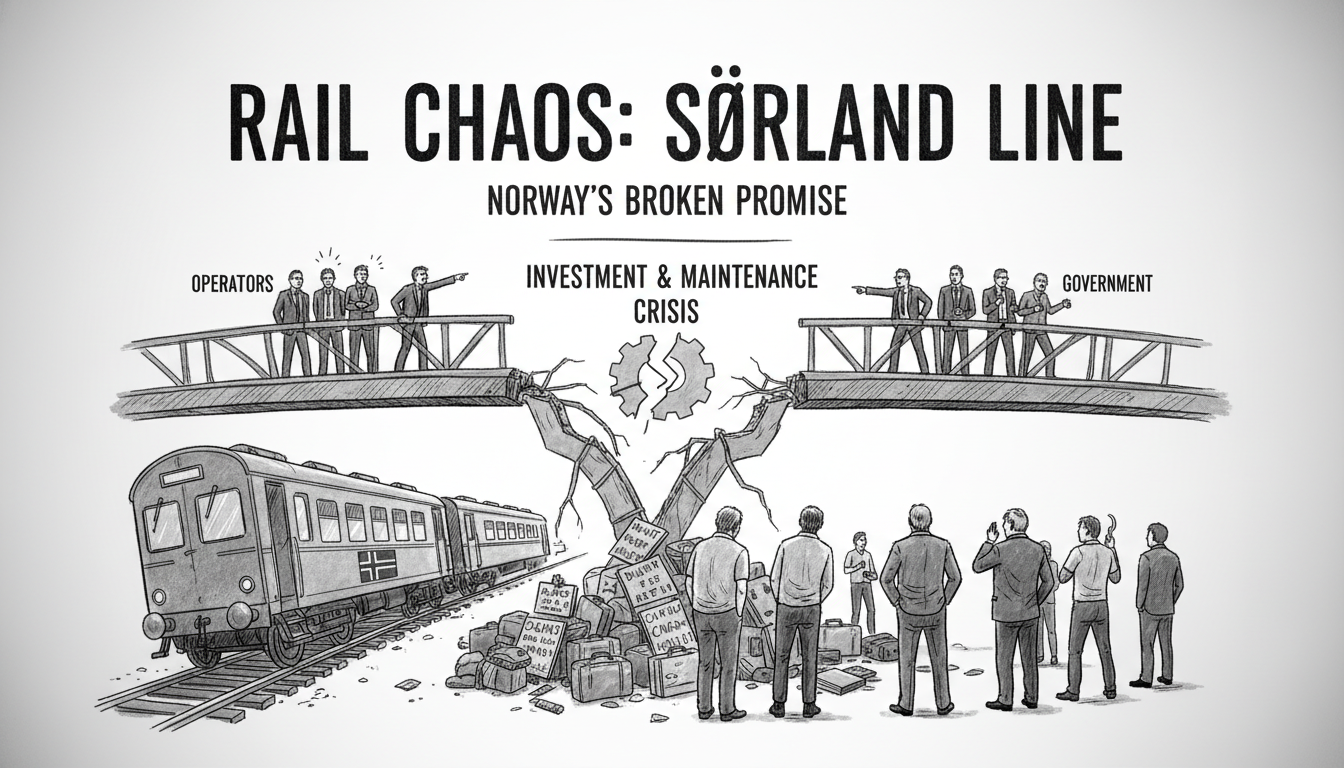A perfect storm of aging trains, infrastructure neglect, and political finger-pointing has brought Norway's vital Sørland Line to near collapse. The critical rail connection between Oslo and Stavanger faces unprecedented reliability crises, with politicians and operators locked in bitter disputes over responsibility.
Parliament representative Ingrid Fiskaa doesn't mince words about the situation. She calls the current arrangement a thundering failure. The politician regularly uses the night train from Stavanger to Oslo but finds herself forced to take flights instead due to constant cancellations.
Recent statistics reveal the depth of the problem. Punctuality for long-distance trains on the line dropped to just 60.6 percent this year, the lowest figure ever recorded. Daily cancellations have become routine for commuters and travelers depending on this essential transportation artery.
Go-Ahead director Emil Eike defends his company's performance while pointing fingers elsewhere. He claims the state neglected train maintenance for 25 years before his company took over. The trains lack functioning air conditioning, toilets, and basic amenities according to his assessment.
Eike advocates for more competition and smaller operational units as the solution. He points to the Airport Express Train and Gjøvik Line as successful examples of this approach. These competing services use identical train models but achieve better reliability according to the director.
Fiskaa completely rejects this argument. She believes multiple competing companies create confusion and accountability gaps. Overpaid directors blaming each other while passengers suffer represents failed policy in her view.
The trains themselves tell part of the story. These 25-year-old models struggle with tilting mechanisms designed for higher speeds in curves. Wear and aging have exacerbated these technical challenges.
Infrastructure limitations compound the mechanical problems. The single-track section between Drammen and Egersund operates beyond capacity. Even minor incidents create major delays across the entire system.
Recent months brought additional complications. A window fell out while a train was moving at high speed. This incident triggered inspections of all train sets and approximately 150 cancellations. Maintenance provider changes and extended track closures created further disruptions.
Government officials acknowledge the systemic challenges. The Ministry of Transport recognizes that much of Norway's railway system is old and inadequately maintained. Officials promise billions in maintenance, renewal, and new train investments.
A traffic agreement review scheduled for completion in the first half of 2026 should provide clearer direction about future operational models. Meanwhile, passengers continue facing uncertainty and frustration.
The contract situation adds another layer of complexity. Go-Ahead has roughly two years remaining on its Sørland Line contract before Vy takes over operations in December 2027.
Norway's railway system faces enormous renewal costs nationwide. The latest condition report estimates needs totaling 127.8 billion kroner over the next twelve years. This equates to approximately 23,000 kroner per Norwegian citizen.
New long-distance trains for the Sørland Line are planned for 2028, but passengers wonder how they'll manage until then. The fundamental debate continues between competition advocates and those favoring consolidated operations.
This transportation crisis highlights broader challenges facing Nordic infrastructure. Aging systems require massive investment while political disagreements delay solutions. Commuters and regional economies bear the brunt of these failures.
The situation demonstrates how complex transportation systems can deteriorate when maintenance gets deferred and accountability becomes fragmented. Norway's experience offers cautionary lessons for other nations modernizing their rail networks.

